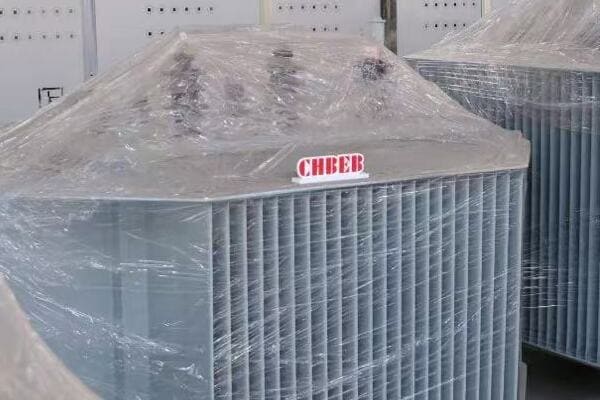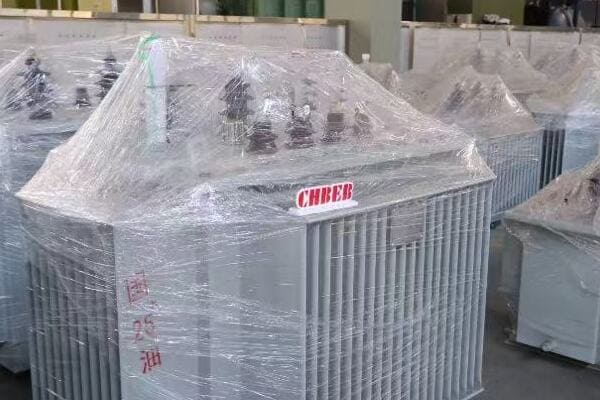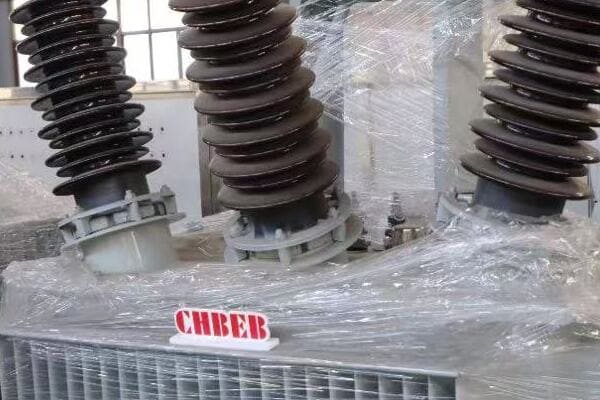What Are Low Voltage Transformers? Function, Voltage Range, and Common Applications?
Are you struggling to understand the role of low voltage transformers in electrical systems? You’re not alone. Many engineers and project managers find themselves confused by the intricacies of these crucial components. But what if you had a clear, comprehensive guide that breaks down everything you need to know about low voltage transformers?
A low voltage transformer is an electrical device that reduces higher input voltages to safer, lower output voltages—typically below 1000 volts—making them suitable for residential, commercial, and industrial applications. These transformers are commonly used to power lighting systems, control panels, and sensitive electronic equipment where standard high-voltage levels would be unsafe or incompatible. They play a crucial role in ensuring safe and efficient power distribution in various settings.

In this comprehensive guide, I’ll walk you through the world of low voltage transformers. We’ll explore what they are, how they work, their typical voltage ranges, and their common applications. Whether you’re a seasoned engineer or new to the field, this article will provide valuable insights to help you make informed decisions about low voltage transformer selection and use.
What Is a Low Voltage Transformer?
Have you ever wondered how the high voltages from power lines are safely reduced for use in our homes and offices? The answer lies in low voltage transformers. But what exactly is a low voltage transformer, and why is it so important in our electrical systems?
A low voltage transformer is a device designed to step down higher voltages to levels below 1000 volts, typically for end-use applications. These transformers take input voltages such as 480V or 220V and convert them to safer, usable voltages like 120V, 24V, or even lower. They are essential for powering everyday electrical devices, lighting systems, and control equipment while ensuring user safety and equipment protection.

Understanding Low Voltage Transformers
Let’s break down the key aspects of low voltage transformers:
- Definition and Purpose
- Voltage Ranges
- Types of Low Voltage Transformers
- Safety Features
- Common Applications
Definition and Purpose
A low voltage transformer is:
- An electrical device that reduces voltage to safer levels
- Designed for end-use power distribution
- Crucial for powering most electrical equipment we use daily
I recently worked on a project upgrading a commercial building’s electrical system. We used several low voltage transformers to step down the 480V supply to 120V for office equipment and 24V for the building’s control systems, showcasing their versatility.
Voltage Ranges
Typical voltage ranges include:
- Primary (input) voltages: Often 480V, 240V, or 220V
- Secondary (output) voltages: Commonly 120V, 24V, 12V, or lower
During a recent industrial automation project, we implemented a range of low voltage transformers, some stepping down 480V to 120V for general use, and others providing 24V DC for PLC and sensor systems.
Types of Low Voltage Transformers
Common types include:
- Dry-type transformers
- Encapsulated transformers
- Control transformers
- Isolation transformers
Here’s a quick overview of low voltage transformer types:
| Type | Description | Best For |
|---|---|---|
| Dry-type | Air-cooled, no liquid insulation | Indoor, commercial use |
| Encapsulated | Sealed in epoxy resin | Harsh environments |
| Control | Precise voltage regulation | Industrial control systems |
| Isolation | Provides electrical isolation | Sensitive electronic equipment |
Safety Features
Key safety aspects:
- Electrical isolation between primary and secondary windings
- Overload protection mechanisms
- Thermal protection in many models
Common Applications
Where you’ll find low voltage transformers:
- Residential and commercial lighting systems
- Office and home appliances
- Industrial control panels
- HVAC systems
- Elevators and escalators
Key points about low voltage transformers:
- They step down voltage to safer, usable levels
- Typically handle voltages below 1000V on the secondary side
- Come in various types for different applications
- Incorporate important safety features
- Essential for powering most electrical devices we use daily
In my experience, understanding the role of low voltage transformers is crucial for anyone involved in electrical system design or management. I recall a case where a client was experiencing frequent equipment failures in their office. Upon investigation, we discovered that they were using equipment rated for 120V directly on a 240V supply. By installing appropriate low voltage transformers, we not only resolved the failure issues but also significantly improved the overall safety of their electrical system.
As we move on to discuss how low voltage transformers work, keep in mind that these devices are fundamental to the safe and efficient distribution of electricity in our daily lives. Their proper selection and application are key to ensuring the reliability and safety of electrical systems in various settings.
How Do Low Voltage Transformers Work?
Have you ever wondered about the magic behind powering your household appliances safely from the high-voltage electricity entering your home? The secret lies in the operation of low voltage transformers. But how exactly do these devices work to convert high voltages into safer, usable levels?
Low voltage transformers work on the principle of electromagnetic induction. They consist of two coils of wire (primary and secondary) wound around a magnetic core. When alternating current flows through the primary coil, it creates a changing magnetic field. This field induces a voltage in the secondary coil. The ratio of turns in the primary and secondary coils determines the voltage transformation. By having fewer turns in the secondary coil, the transformer steps down the voltage to a lower, safer level.

Exploring the Working Mechanism
Let’s break down the operation into key components:
- Electromagnetic Induction
- Core and Windings
- Turns Ratio and Voltage Transformation
- Load and No-Load Operation
- Efficiency and Losses
Electromagnetic Induction
The fundamental principle:
- Changing magnetic field induces voltage in a conductor
- Alternating current creates this changing field
- Faraday’s law of induction governs this process
I often use a simple demonstration with a small model transformer to show how changing the current in one coil induces voltage in another, even when they’re not in direct contact.
Core and Windings
Key components:
- Core: Usually made of laminated silicon steel
- Primary winding: Connects to input voltage
- Secondary winding: Provides output voltage
During a recent factory tour, I observed the precision involved in winding transformers. The careful layering of windings and core laminations is crucial for efficient operation.
Turns Ratio and Voltage Transformation
How voltage is stepped down:
- Turns ratio = Primary turns / Secondary turns
- Voltage ratio = Primary voltage / Secondary voltage
- Fewer secondary turns result in lower output voltage
Here’s a simplified example of turns ratio and voltage:
| Primary Turns | Secondary Turns | Input Voltage | Output Voltage |
|---|---|---|---|
| 1000 | 100 | 240V | 24V |
| 500 | 250 | 120V | 60V |
| 1000 | 50 | 480V | 24V |
Load and No-Load Operation
Behavior under different conditions:
- No-load: Minimal current in primary, core losses present
- Under load: Current in secondary affects primary current
- Voltage regulation maintains output under varying loads
Efficiency and Losses
Factors affecting performance:
- Core losses (hysteresis and eddy currents)
- Copper losses in windings
- Efficiency typically high, often above 95%
Key points about how low voltage transformers work:
- They operate based on electromagnetic induction
- The core and windings are crucial components
- Turns ratio determines the voltage transformation
- They behave differently under load and no-load conditions
- Efficiency is generally high, but losses do occur
In my experience, understanding these principles is crucial for effective transformer management. I recall a case where a client was experiencing unexpectedly high energy bills. Upon investigation, we found that their low voltage transformers were oversized for the actual load, leading to unnecessary core losses. By replacing them with appropriately sized units, we significantly improved the overall efficiency of their electrical system.
For example, during a recent energy audit of a commercial building, we used thermal imaging to observe the heat distribution in various low voltage transformers. This allowed us to identify units that were operating inefficiently due to poor load matching or aging insulation, leading to targeted replacements that improved the building’s overall energy efficiency.
As we move on to discuss voltage ranges and common specifications, keep these working principles in mind. Understanding how low voltage transformers function at their core will help you appreciate the importance of proper sizing and selection for specific applications.
Voltage Range and Common Specifications?
Are you finding it challenging to navigate the world of low voltage transformer specifications? You’re not alone. Many professionals struggle to understand the standardized ratings and how they apply to different applications. But what exactly are these specifications, and how do they impact transformer selection and use?
Low voltage transformers typically handle input voltages up to 1000V, with common primary voltages including 480V, 240V, and 220V. Output voltages commonly range from 120V down to 12V or lower. Capacity ratings usually span from 25VA to 500kVA. These transformers are designed for either 50Hz or 60Hz operation, depending on the region. Other key specifications include insulation class, temperature rise, and enclosure type (often specified by IP ratings for environmental protection).

Understanding Transformer Specifications
Let’s break down the key specifications:
- Voltage Ranges
- Power Ratings
- Frequency Standards
- Insulation Classes
- Environmental Protection Ratings
Voltage Ranges
Common input and output voltages:
- Primary (input): 480V, 240V, 220V
- Secondary (output): 120V, 24V, 12V, 5V
I recently worked on a project where we needed to power various systems in a new office building. We used a combination of 480V to 120V transformers for general power and 240V to 24V units for the building’s automation systems.
Power Ratings
Capacity ranges:
- Small control transformers: 25VA to 5kVA
- Larger distribution transformers: Up to 500kVA
During a recent industrial upgrade, we installed a series of low voltage transformers ranging from 5kVA for control circuits to 300kVA for powering production equipment, showcasing the wide range of available capacities.
Frequency Standards
Regional variations:
- 50Hz: Common in Europe, Asia, Africa
- 60Hz: Standard in North America, parts of South America
Here’s a quick overview of common specifications:
| Specification | Common Values | Notes |
|---|---|---|
| Input Voltage | 480V, 240V, 220V | Depends on region and application |
| Output Voltage | 120V, 24V, 12V, 5V | Based on end-use requirements |
| Power Rating | 25VA – 500kVA | Varies widely with application |
| Frequency | 50Hz or 60Hz | Region-dependent |
| Insulation Class | B (130°C), F (155°C), H (180°C) | Affects temperature handling |
Insulation Classes
Temperature handling capabilities:
- Class B: 130°C
- Class F: 155°C
- Class H: 180°C
Environmental Protection Ratings
IP (Ingress Protection) ratings:
- IP00: No special protection
- IP23: Protected against solid objects over 12mm, spraying water
- IP54: Dust protected, splash-proof
Key points about low voltage transformer specifications:
- Voltage ranges are standardized but vary by application and region
- Power ratings cover a wide range to suit different needs
- Frequency standards are region-specific
- Insulation classes determine temperature handling capabilities
- Environmental ratings are crucial for proper application selection
In my experience, understanding these specifications is crucial for effective transformer selection. I recall a project where a client in the food processing industry needed transformers for their production line. By carefully considering the voltage requirements, load capacity, and the wash-down environment (requiring a high IP rating), we were able to select transformers that not only met their power needs but also withstood the challenging environmental conditions.
For example, in a recent data center project, we had to navigate the complex power requirements of various IT equipment. We used a combination of transformers with different voltage outputs and power ratings, all selected based on their efficiency ratings and ability to handle the continuous load typical in data center environments.
As we move on to discuss common applications of low voltage transformers, keep these specifications in mind. They play a crucial role in determining which transformers are suitable for specific uses and how they integrate into various electrical systems.
Common Applications of Low Voltage Transformers?
Have you ever wondered where all those low voltage transformers end up being used? From the devices in your home to large industrial machines, low voltage transformers play a crucial role in powering our world. But what are the most common applications for these versatile devices, and why are they so important in these settings?
Low voltage transformers find widespread use in residential, commercial, and industrial applications. They are essential in lighting systems, powering household appliances, and office equipment. In industrial settings, they’re crucial for control systems, motors, and automation equipment. Low voltage transformers are also vital in specialized fields like healthcare (powering medical devices), transportation (in elevators and electric vehicle charging stations), and in IT infrastructure (data centers and telecommunications). Their ability to provide safe, efficient power makes them indispensable in modern electrical systems.

Exploring Key Applications
Let’s examine the main areas where low voltage transformers are commonly used:
- Residential and Commercial Lighting
- Industrial Control Systems
- Consumer Electronics and Appliances
- Healthcare and Medical Equipment
- Transportation and Infrastructure
- Renewable Energy Systems
Residential and Commercial Lighting
Illuminating our spaces:
- Step-down transformers for LED lighting systems
- Landscape lighting transformers
- Emergency lighting power supplies
I recently worked on a project retrofitting an old warehouse into a modern office space. We used multiple low voltage transformers to power an energy-efficient LED lighting system, significantly reducing the building’s energy consumption.
Industrial Control Systems
Powering automation:
- Control panel transformers
- PLC (Programmable Logic Controller) power supplies
- Sensor and instrumentation power
During a recent factory automation upgrade, we installed numerous small control transformers to power various sensors, actuators, and control panels, forming the backbone of the facility’s new smart manufacturing system.
Consumer Electronics and Appliances
Everyday devices:
- Chargers for laptops and mobile devices
- Power supplies for home entertainment systems
- Transformers in large appliances (e.g., washing machines)
Here’s a quick overview of common applications:
| Sector | Application | Typical Transformer Type |
|---|---|---|
| Residential | Home lighting | Small, encapsulated |
| Commercial | Office equipment | Dry-type, various sizes |
| Industrial | Motor controls | Control transformers |
| Healthcare | Medical imaging | Isolation transformers |
| Transportation | EV charging stations | Step-down, high efficiency |
Healthcare and Medical Equipment
Ensuring safe, reliable power:
- Isolation transformers for sensitive medical devices
- MRI and X-ray machine power supplies
- Hospital room general-purpose transformers
Transportation and Infrastructure
Keeping things moving:
- Elevator and escalator control systems
- Traffic signal power supplies
- Electric vehicle charging stations
Renewable Energy Systems
Supporting green technology:
- Solar inverter transformers
- Wind turbine control systems
- Battery storage system interfaces
Key points about low voltage transformer applications:
- They are crucial in both residential and commercial lighting systems
- Industrial control and automation heavily rely on low voltage transformers
- Consumer electronics and appliances often incorporate small transformers
- Healthcare applications require specialized, high-reliability transformers
- Transportation and infrastructure systems use various low voltage transformers
- Renewable energy systems integrate these transformers for power conversion and control
In my experience, the versatility of low voltage transformers becomes particularly evident in complex, multi-faceted projects. I recall a recent smart building project where we integrated various low voltage transformers throughout the structure. From powering the LED lighting and HVAC controls to supplying the building’s security systems and EV charging stations in the parking garage, these transformers were the unsung heroes enabling the building’s advanced functionality.
For example, in a cutting-edge manufacturing facility I consulted on, we implemented a network of low voltage transformers to power a diverse array of systems. This included precision control equipment for robotic assembly lines, power supplies for quality control sensors, and even specialized transformers for the facility’s advanced energy management system. The project highlighted how low voltage transformers are essential in creating flexible, efficient, and intelligent industrial environments.
As we move on to discuss the advantages of using low voltage transformers, keep these diverse applications in mind. Understanding where and how these transformers are used helps appreciate their importance in our daily lives and various industries.
Advantages of Using Low Voltage Transformers?
Have you ever wondered why low voltage transformers are so widely used across different sectors? The answer lies in their numerous benefits. But what specific advantages do these transformers offer, and how do they impact safety, efficiency, and overall system performance?
Low voltage transformers offer several key advantages including enhanced safety, improved energy efficiency, and better voltage regulation. They provide electrical isolation, reducing the risk of electric shock. These transformers can be more energy-efficient than their high voltage counterparts in certain applications, leading to reduced power losses. They also offer better voltage stability for sensitive equipment. Additionally, low voltage transformers are often more compact, easier to install and maintain, and can be customized for specific applications, making them versatile solutions for various power needs.

Key Advantages of Low Voltage Transformers
Let’s explore the main benefits:
- Enhanced Safety
- Improved Energy Efficiency
- Better Voltage Regulation
- Electrical Isolation
- Compact Size and Easy Installation
Enhanced Safety
Reducing electrical hazards:
- Lower voltage means reduced risk of electric shock
- Safer for end-user interaction with powered devices
- Compliance with safety standards for various applications
I recently managed a project upgrading a school’s electrical system. By implementing low voltage transformers for classroom equipment and lighting, we significantly improved the overall safety for students and staff.
Improved Energy Efficiency
Optimizing power usage:
- Reduced power losses in short-distance distribution
- Better efficiency in low-power applications
- Ability to match transformer size to actual load requirements
During an energy audit for a small manufacturing plant, we found that replacing their oversized transformers with properly sized low voltage units resulted in a 5% reduction in overall energy consumption.
Better Voltage Regulation
Maintaining stable power:
- Improved voltage stability for sensitive equipment
- Ability to compensate for voltage fluctuations
- Critical for precision instruments and control systems
Here’s a comparison of voltage regulation in different scenarios:
| Scenario | Without LV Transformer | With LV Transformer |
|---|---|---|
| Voltage Fluctuation | ±10% | ±2% |
| Load Changes | Significant impact | Minimal impact |
| Long Cable Runs | Voltage drop issues | Compensated |
Electrical Isolation
Protecting circuits and equipment:
- Separation of primary and secondary circuits
- Reduction of electrical noise and interference
- Critical for medical and sensitive electronic equipment
Compact Size and Easy Installation
Practical benefits:
- Smaller footprint compared to high voltage equipment
- Easier to integrate into existing systems
- Simpler maintenance and replacement procedures
Key advantages of using low voltage transformers:
- They significantly enhance electrical safety in various applications
- Can lead to improved energy efficiency in certain scenarios
- Provide better voltage regulation for sensitive equipment
- Offer crucial electrical isolation for many applications
- Their compact size and ease of installation provide practical benefits
In my experience, these advantages often make low voltage transformers the preferred choice for many projects. I recall a renovation project for an old industrial building being converted into a mixed-use space. By choosing low voltage transformers for different sections of the building, we were able to create separate, safe electrical systems for the residential, commercial, and light industrial areas. This not only improved safety but also allowed for more efficient energy management across the diverse uses of the space.
For instance, in a recent project for a high-tech research facility, we implemented a network of low voltage transformers to power various sensitive instruments. The electrical isolation and superior voltage regulation provided by these transformers were crucial in ensuring accurate measurements and reliable operation of the facility’s advanced equipment. This showcased how the advantages of low voltage transformers can be critical in specialized, high-precision environments.
As we move on to discuss how to choose the right low voltage transformer for your project, keep these advantages in mind. They play a crucial role in decision-making processes for electrical system design and management, especially when balancing safety, efficiency, and performance requirements.
Choosing the Right Low Voltage Transformer for Your Project?
Are you feeling overwhelmed by the options when it comes to selecting a low voltage transformer for your project? You’re not alone. Many engineers and project managers struggle with this decision. But how can you ensure you’re making the best choice for your specific needs?
Choosing the right low voltage transformer involves considering several key factors: voltage requirements, power capacity needs, environmental conditions, efficiency ratings, and specific application demands. Start by determining the exact input and output voltages required. Then, calculate the total power load the transformer needs to handle. Consider the installation environment, including temperature, humidity, and potential exposure to contaminants. Look at efficiency ratings, especially for continuous operation. Finally, factor in any special requirements like regulatory compliance or specific features needed for your application.

Key Factors in Transformer Selection
Let’s break down the main considerations:
- Voltage Requirements
- Power Capacity
- Environmental Factors
- Efficiency and Performance
- Special Features and Compliance
Voltage Requirements
Matching transformer to your system:
- Determine exact input voltage available
- Specify required output voltage(s)
- Consider voltage regulation needs
I recently worked on a project where the client initially requested a 240V to 120V transformer. After a thorough analysis of their equipment, we realized some devices required 24V DC. This led us to select a multi-tap transformer with additional rectification, ensuring all voltage needs were met efficiently.
Power Capacity
Ensuring adequate power supply:
- Calculate total connected load
- Factor in potential future expansion
- Consider peak load vs. continuous operation
During a recent industrial automation upgrade, we carefully assessed both current and projected power needs. By choosing a transformer with 20% extra capacity, we provided room for future expansion without significant oversizing.
Environmental Factors
Adapting to installation conditions:
- Temperature range at the installation site
- Humidity and potential for condensation
- Presence of dust, chemicals, or other contaminants
Here’s a quick guide for environmental considerations:
| Environment | Recommended Features | Example |
|---|---|---|
| Indoor, Clean | Standard enclosure | Office building |
| Outdoor | Weather-resistant, IP65+ | Street lighting |
| High Humidity | Sealed, anti-corrosion | Coastal installations |
| Dusty | Filtered ventilation | Factory floor |
Efficiency and Performance
Optimizing operational costs:
- Check efficiency ratings, especially for continuous operation
- Consider no-load losses for intermittent use applications
- Evaluate temperature rise and cooling methods
Special Features and Compliance
Meeting specific project requirements:
- Regulatory compliance (e.g., UL, CE, CSA)
- Special features (e.g., taps, electrostatic shielding)
- Noise level requirements for sensitive environments
Key points for choosing the right low voltage transformer:
- Accurately determine voltage requirements for both input and output
- Calculate power needs carefully, including future expansion
- Consider the environmental conditions at the installation site
- Evaluate efficiency and performance metrics for long-term operation
- Ensure compliance with relevant standards and any special feature needs
In my experience, the process of selecting the right transformer often involves balancing multiple factors. I recall a project for a data center where we needed to power both IT equipment and cooling systems. The challenge was to find transformers that could handle the high continuous load efficiently while also providing the clean power necessary for sensitive computing equipment. We ended up choosing high-efficiency, K-rated transformers with electrostatic shielding to meet both the power demand and power quality requirements.
For example, in a recent renewable energy project, we faced the challenge of integrating solar inverters with the local grid. The selection process involved finding transformers that could handle the variable output from the solar panels, meet strict grid connection standards, and operate efficiently in an outdoor environment. This required careful consideration of voltage regulation capabilities, efficiency across different load levels, and robust environmental protection.
Remember, choosing the right low voltage transformer is crucial for the safety, efficiency, and reliability of your electrical system. Take the time to thoroughly assess your needs and consult with experts if necessary. The right choice will not only meet your current requirements but also provide flexibility for future needs and contribute to the overall success of your project.
Conclusion
Low voltage transformers are essential components in modern electrical systems, offering safe and efficient power distribution for a wide range of applications. From lighting and consumer electronics to industrial control systems and renewable energy, these transformers play a crucial role in our daily lives and various industries. Understanding their function, specifications, and advantages is key to making informed decisions in electrical system design and management.
Remember, at chbeb-ele, we’re not just sharing information – we’re empowering you to be part of the solution in creating a secure, clean, and efficient energy future. Let’s continue this journey together.
Free CHBEB Transformer Catalog Download
Get the full range of CHBEB transformers in one catalog.
Includes oil-immersed, dry-type, pad-mounted, and custom solutions.
Quick Message
Request A free quote
We'd like to work with you
- +86 15558785111
- [email protected]
- +86 15558785111
What We Do
CHINA BEI ER BIAN (CHBEB) GROUP, with 218 million in registered capital, originated from Beijing Beierbian Transformer Group. Headquartered in Beijing for R&D, it operates major production bases in Nanjing and Yueqing, producing high-quality products.
Latest Product
address
BeiJing
No 3,RongJing East Road,BeiJing Economic Technological Development Area,BeiJing,China
JiangSu
No 7️Xiangfeng Road,Jiangning,NanJing,JiangSu,China
WenZhou
No.211, Wei 16 Road, Industrial Zone, Yueqing, Wenzhou, Zhejiang, China.
XiangYang Industrial Zone ,YueQing,WenZhou,ZheJiang,China
contact us
- [email protected]
- +86 13057780111
- +86 13057780111
- +86 15558785111
Copyright © Bei Er Bian Group


